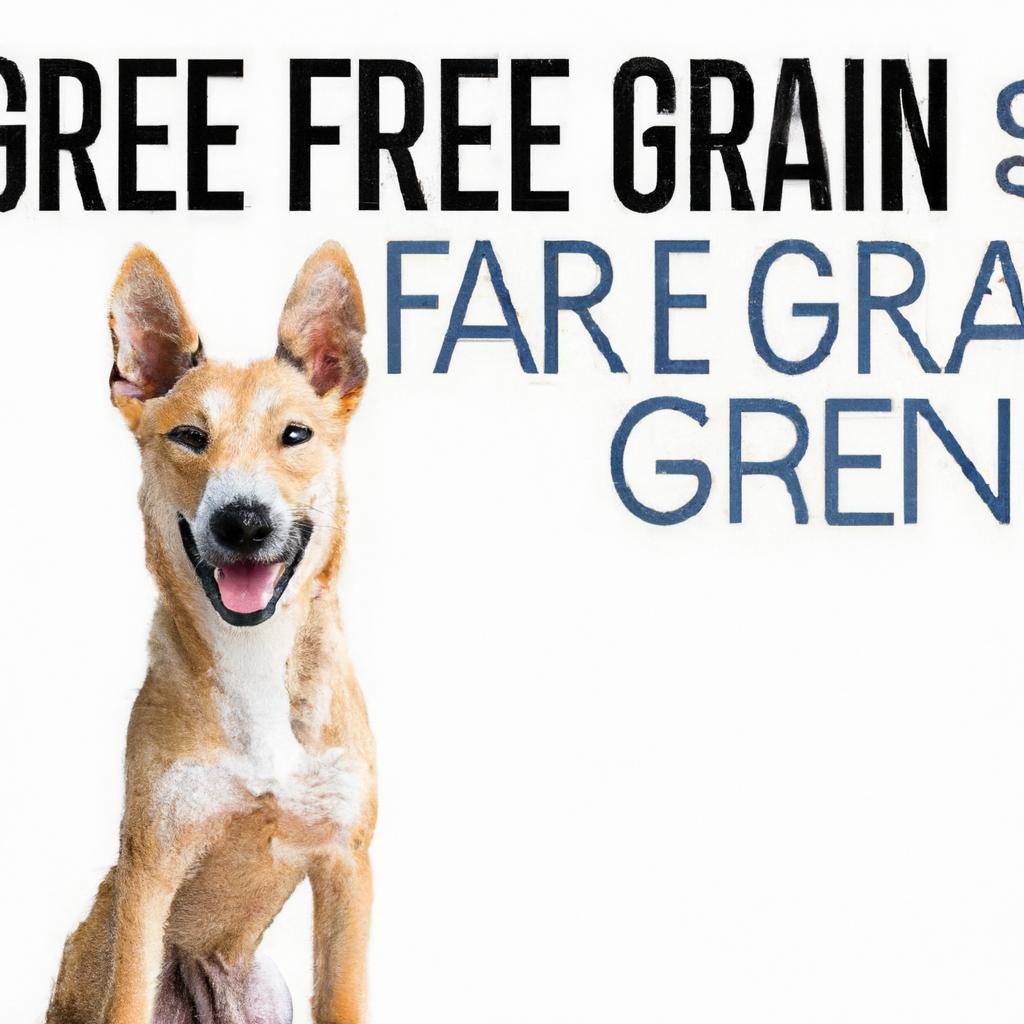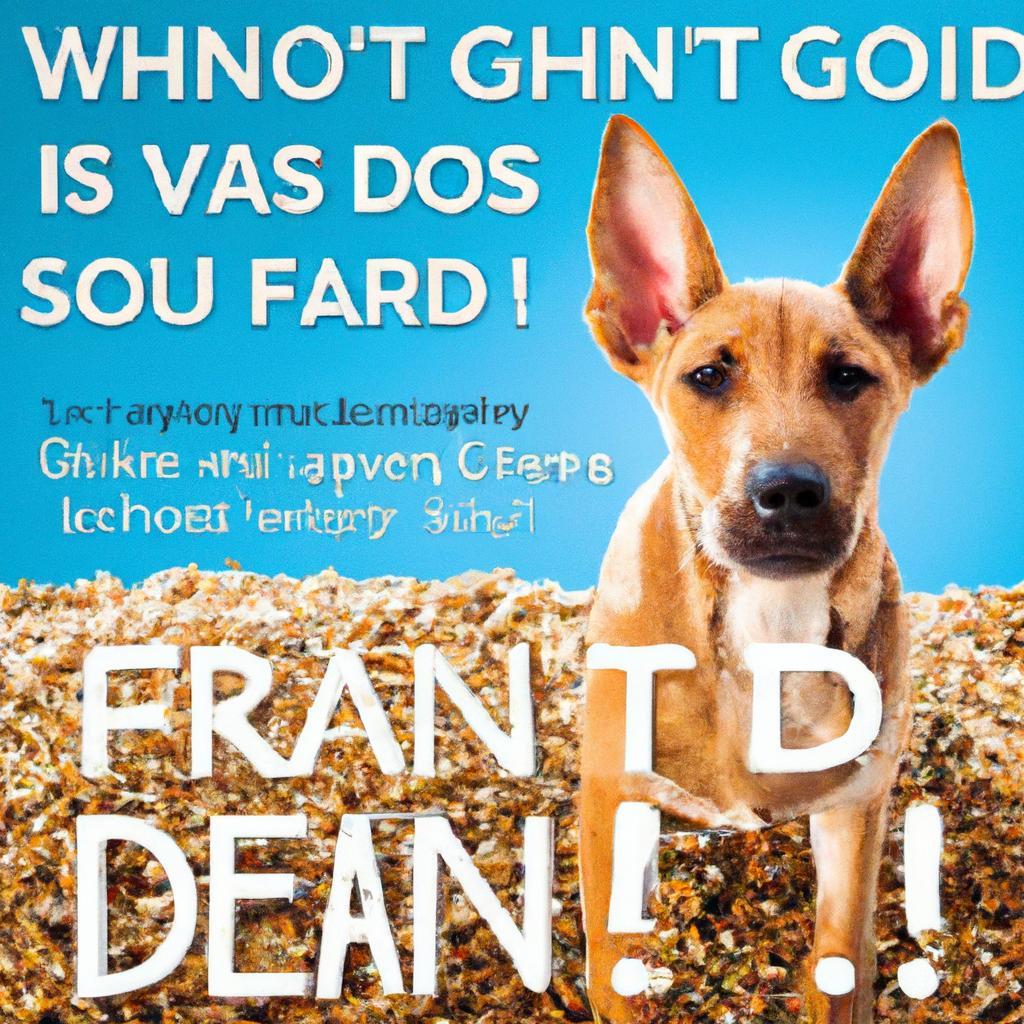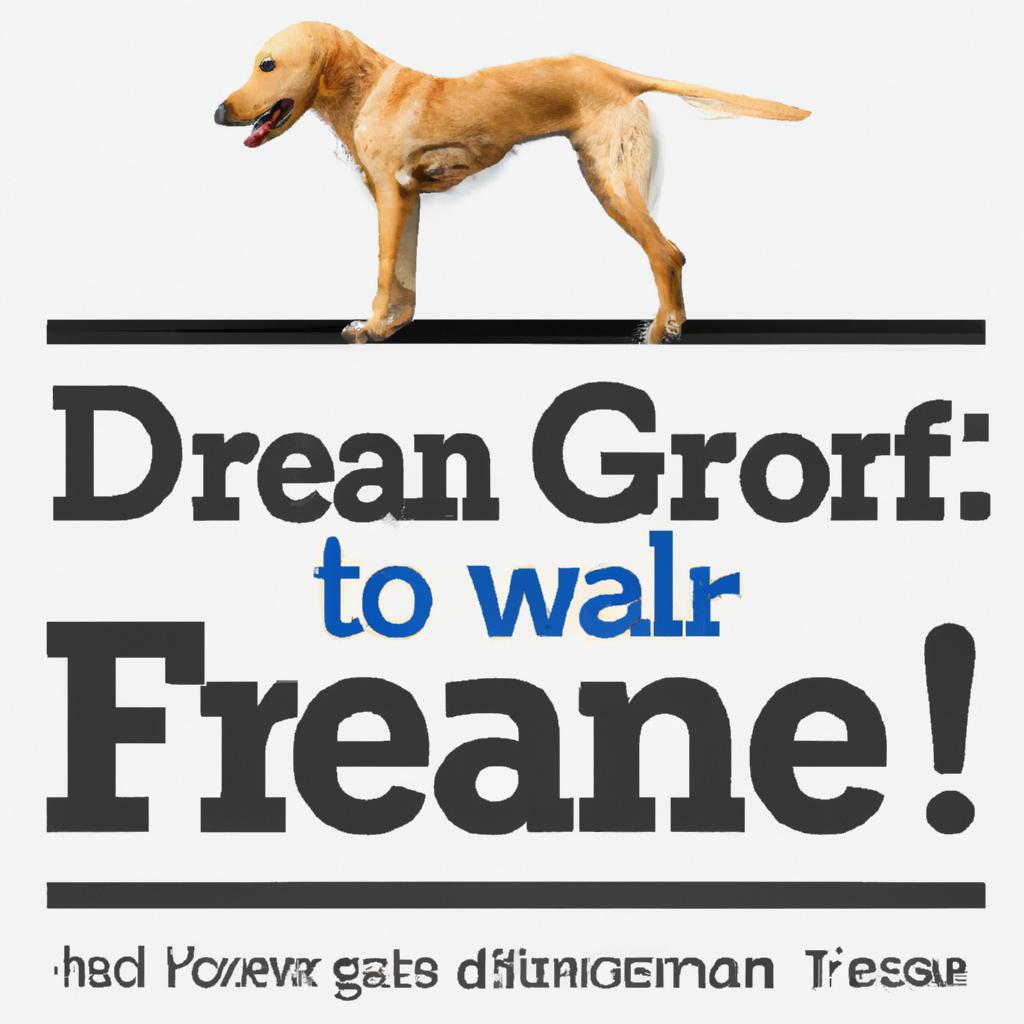As the sun set, Sarah watched her golden retriever, Max, struggle with his food. Concerned about his health, she pondered the grain-free trend. One evening, she met a veterinarian who shared a story about a dog named Bella. Bella thrived on a balanced diet, including grains, which provided essential nutrients and energy. Intrigued, Sarah realized that not all dogs need grain-free diets. With the right guidance, she could ensure Max’s health and happiness. Before making a decision, consult a professional to find the best diet for your furry friend.
Contents
- Understanding the Nutritional Needs of Your Dog
- Evaluating the Benefits and Risks of Grain-Free Diets
- Identifying Quality Ingredients in Dog Food
- Making an Informed Decision for Your Pets Health
- Q&A
Understanding the Nutritional Needs of Your Dog
When considering your dog’s diet, it’s essential to understand their unique nutritional needs. Dogs are omnivores, which means they require a balanced diet that includes proteins, fats, carbohydrates, vitamins, and minerals. While some pet owners are drawn to grain-free diets, it’s crucial to recognize that grains can be a valuable source of nutrients for many dogs. Whole grains like brown rice, oats, and barley provide energy and fiber, supporting digestive health and overall well-being.
One of the primary concerns surrounding grain-free diets is the potential for nutritional deficiencies. Many grain-free dog foods substitute grains with alternative carbohydrates, such as peas and potatoes. While these ingredients can be beneficial, they may not offer the same nutritional profile as traditional grains. It’s vital to ensure that your dog’s diet is well-rounded and meets their specific requirements, which can vary based on factors such as age, breed, and activity level.
Moreover, recent studies have raised questions about the long-term health implications of grain-free diets. Some research has linked these diets to an increased risk of canine dilated cardiomyopathy (DCM), a serious heart condition. While the exact cause is still being investigated, it highlights the importance of consulting with a veterinarian before making significant changes to your dog’s diet. A professional can help you assess your dog’s individual needs and recommend a diet that promotes optimal health.
Ultimately, the decision to feed your dog grain-free should be based on careful consideration of their health, lifestyle, and any specific dietary needs they may have. If your dog has food sensitivities or allergies, a grain-free diet might be appropriate. However, for many dogs, a balanced diet that includes grains can provide essential nutrients and support overall health. Always prioritize your dog’s well-being by choosing high-quality food and seeking guidance from a veterinary professional.
Evaluating the Benefits and Risks of Grain-Free Diets
When considering a grain-free diet for your dog, it’s essential to weigh the potential benefits against the risks involved. Many pet owners are drawn to grain-free options due to the belief that they can enhance their dog’s overall health. Some of the touted benefits include:
- Improved Digestion: Grain-free diets often contain higher levels of protein and fat, which can lead to better digestion for some dogs, particularly those with sensitivities to grains.
- Allergy Management: For dogs with grain allergies or intolerances, eliminating grains can reduce skin irritations and gastrointestinal issues.
- Weight Management: Grain-free diets can be lower in carbohydrates, which may help in maintaining a healthy weight for dogs prone to obesity.
However, it’s crucial to recognize that grain-free diets are not without their drawbacks. Recent studies have raised concerns about the potential health risks associated with these diets, particularly regarding heart health. Some of the risks include:
- Cardiomyopathy: There have been reports linking grain-free diets, especially those high in peas and lentils, to a specific type of heart disease known as dilated cardiomyopathy (DCM).
- Nutritional Deficiencies: Grain-free diets may lack essential nutrients that grains provide, leading to imbalances that can affect your dog’s health over time.
- Increased Protein Levels: While protein is vital, excessively high levels can strain the kidneys, particularly in dogs with pre-existing conditions.
Another factor to consider is the individual needs of your dog. Not all dogs will thrive on a grain-free diet, and some may actually benefit from the inclusion of grains in their meals. It’s important to observe your dog’s reaction to dietary changes and consult with a veterinarian to tailor a diet that meets their specific health requirements. Factors such as age, breed, activity level, and any existing health conditions should guide your decision-making process.
Ultimately, the choice between grain-free and traditional diets should be informed by thorough research and professional guidance. While grain-free diets can offer certain advantages, they also come with significant risks that could impact your dog’s long-term health. Balancing the benefits and risks is key to ensuring your furry friend receives the best possible nutrition.
Identifying Quality Ingredients in Dog Food
When selecting dog food, the quality of ingredients is paramount. Look for products that list **real meat** as the first ingredient, as this indicates a high protein content essential for your dog’s health. Ingredients such as chicken, beef, or fish provide the necessary amino acids that support muscle development and overall vitality. Avoid foods that list vague terms like “meat by-products” or “animal meal,” as these can be lower quality and less nutritious.
Another crucial aspect to consider is the presence of **whole grains** or **grain alternatives**. If you opt for grain-inclusive diets, choose options that include **brown rice, oats, or barley**, which are excellent sources of fiber and energy. Conversely, if you prefer a grain-free diet, ensure that the food contains **high-quality carbohydrates** such as sweet potatoes or peas, which can provide essential nutrients without the potential drawbacks of grains.
Additionally, pay attention to the inclusion of **fruits and vegetables** in the ingredient list. Ingredients like blueberries, carrots, and spinach not only add flavor but also offer antioxidants, vitamins, and minerals that contribute to your dog’s immune health. A well-rounded diet should incorporate a variety of these ingredients to ensure your dog receives a comprehensive range of nutrients.
Lastly, scrutinize the presence of **additives and preservatives**. Opt for dog foods that use natural preservatives like tocopherols (vitamin E) instead of artificial ones. Avoid products with excessive fillers, artificial colors, or flavors, as these can detract from the overall quality of the food. By prioritizing high-quality ingredients, you can make an informed decision that supports your dog’s health and well-being.
Making an Informed Decision for Your Pets Health
When considering the best diet for your dog, it’s essential to weigh the pros and cons of grain-free options. Many pet owners are drawn to grain-free diets, believing they align more closely with a dog’s ancestral eating habits. However, it’s crucial to understand that not all dogs require a grain-free diet, and grains can actually provide beneficial nutrients. Before making a decision, consult with your veterinarian to assess your dog’s specific health needs and dietary requirements.
One of the primary arguments for grain-free diets is the potential for improved digestion and reduced allergies. Some dogs may experience sensitivities to certain grains, leading to gastrointestinal issues or skin irritations. If your dog shows signs of discomfort after consuming grain-based foods, a grain-free diet might be worth exploring. However, it’s important to note that grain allergies are relatively rare, and other ingredients could be the culprits behind your pet’s health issues.
On the flip side, grains such as brown rice, oats, and barley are excellent sources of carbohydrates, fiber, and essential nutrients. They can provide your dog with sustained energy and support healthy digestion. Additionally, many grain-free dog foods substitute grains with high levels of protein and fat, which can lead to an unbalanced diet if not carefully monitored. A diet too high in protein can strain your dog’s kidneys, especially in older pets or those with pre-existing health conditions.
Ultimately, the decision should be based on your dog’s individual health profile, lifestyle, and preferences. Consider factors such as age, breed, activity level, and any existing health issues. Conduct thorough research on the ingredients in both grain-free and grain-inclusive diets, and seek advice from a veterinary nutritionist if necessary. Making an informed choice will ensure your furry friend receives the best possible nutrition tailored to their unique needs.
Q&A
-
What are the benefits of grain-free dog food?
Grain-free dog food can offer several benefits, particularly for dogs with specific dietary sensitivities or allergies. These foods often contain higher protein levels and may include alternative carbohydrates like sweet potatoes or peas, which can be easier for some dogs to digest. Additionally, grain-free diets can promote healthier skin and a shinier coat in dogs prone to grain-related skin issues.
-
Are there any risks associated with grain-free diets?
Yes, there are potential risks. Recent studies have suggested a link between grain-free diets and certain heart conditions, such as dilated cardiomyopathy (DCM), particularly in breeds predisposed to this condition. It’s crucial to consult with your veterinarian before making any significant dietary changes to ensure your dog’s health and nutritional needs are met.
-
How can I determine if my dog needs a grain-free diet?
To determine if a grain-free diet is appropriate for your dog, consider their health history, any food allergies, and their overall well-being. If your dog shows signs of food sensitivities, such as itching, gastrointestinal upset, or chronic ear infections, a grain-free diet may be worth exploring. Always consult your veterinarian for personalized advice based on your dog’s specific needs.
-
What should I look for in a grain-free dog food?
When selecting a grain-free dog food, prioritize high-quality ingredients. Look for:
- High protein content: Ensure the food lists a quality protein source as the first ingredient.
- Balanced nutrition: Check for a complete and balanced formulation that meets AAFCO standards.
- Limited fillers: Avoid foods with excessive fillers or artificial additives.
- Transparency: Choose brands that provide clear information about sourcing and ingredient quality.
while grain-free diets may suit some dogs, it’s essential to consult your veterinarian before making any changes. Prioritize your pet’s health by choosing a balanced diet tailored to their specific needs. Your dog’s well-being depends on informed choices.




